Most marketing conferences consist of hundreds of people sitting around wedding-reception-style as they listen to a parade of speakers and presenters touting their constructs as to how to make marketing more effective. All content that lives in the books they have available for sale in the back of the room.
A few years ago, I came across a different kind of conference — one that continues to interest and challenge me. It’s called the Un-Conference and it bills itself as the first “competitive marketing event.” This year’s was held at the Hard Rock Hotel in sunny San Diego, California, and its theme was Keeping Brands Human. The handful of presenters and team challenges were all focused around bringing or retaining the human element in the solutions we create. Here’s a brief run-down on some of the ideas that jumped out at me:
Carmen Simon: Preserving Humanity and Being Memorable in the Process

We all know how hard it is to rise above the noise today. Carmen Simon presents the idea that while programmatic media and machine learning are gaining fast, it’s humans that ultimately drive demand, not robots. We have to learn how to make memory our mission. Getting people to remember our messages is the key to moving them toward our brands and not away from them.
Geoffrey Colon: The Culture of Proximity Keeping Your Brands Real
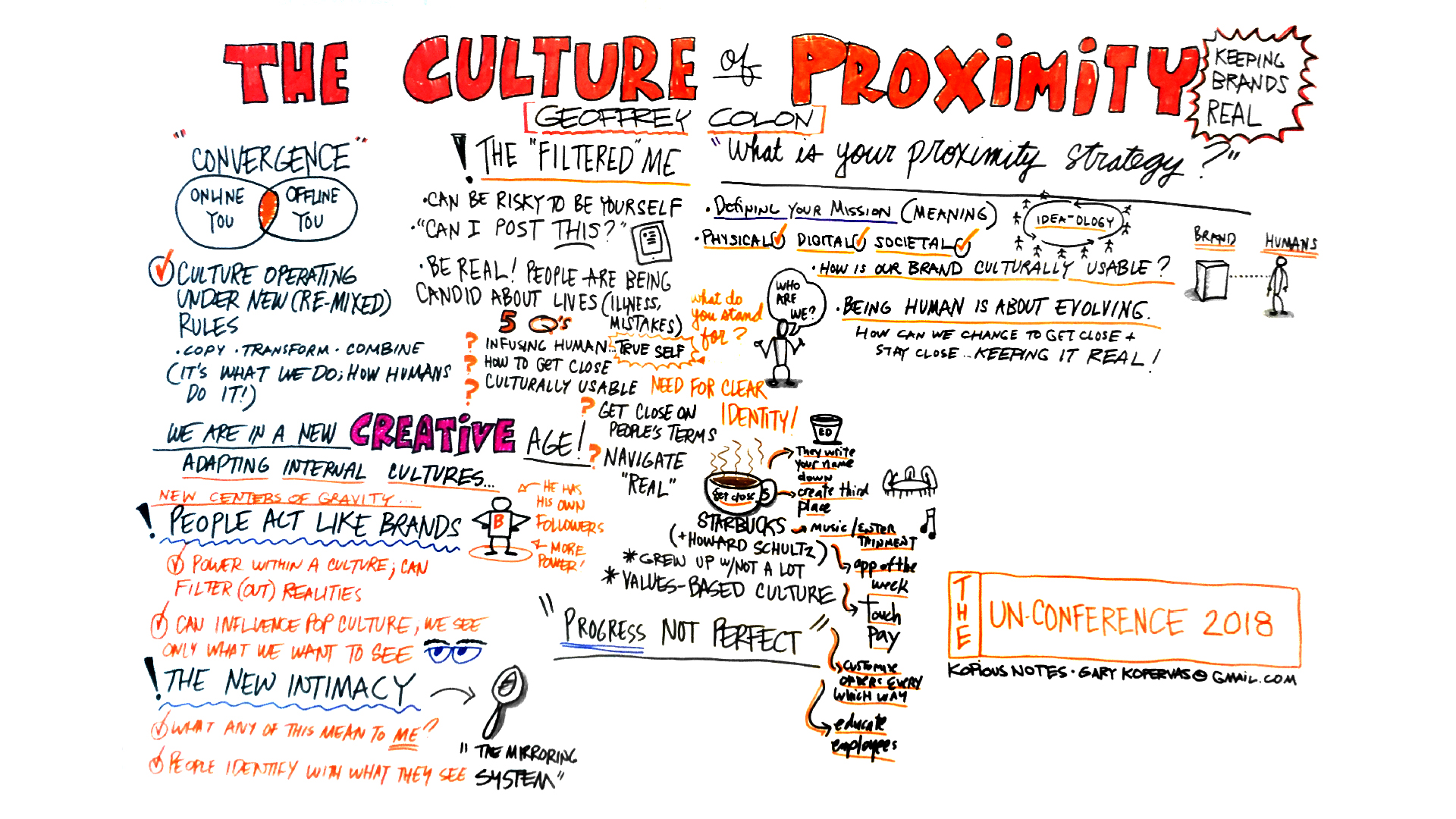
Geoff expressed a belief that we are in a new creative age that engages humans on a new level. He used Starbucks as an example of how brands are designing end-to-end experiences that put humans in the middle of it all, from writing your name on the cup to offering a time-saving ordering app, to designing their spaces with plenty of comfortable seating.
Len Jacobson: Human-Centric Storytelling
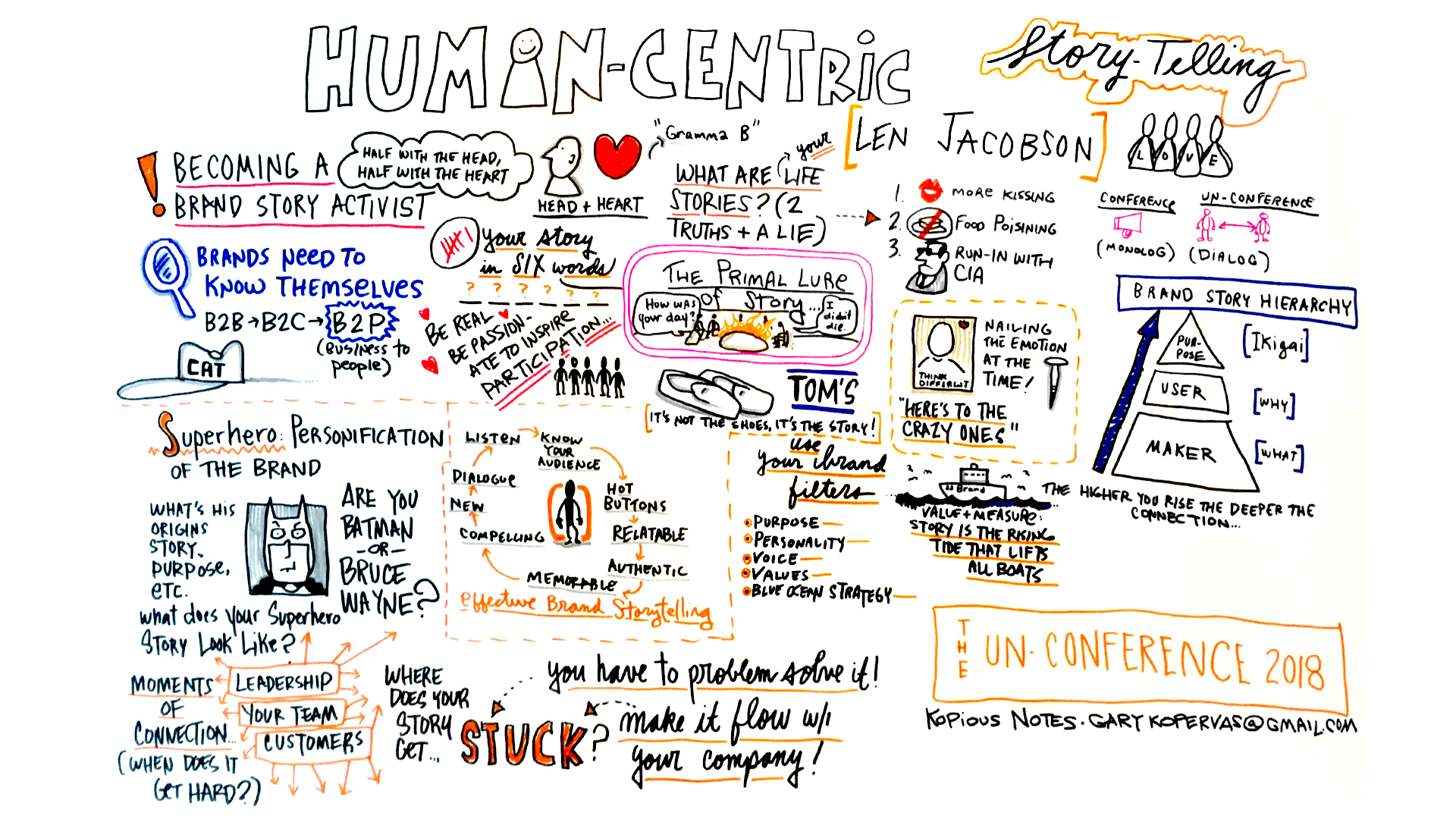
Len talked about his Gramma B’s advice to him on how to find the perfect woman, which consisted of the phrase “half head, half heart.” His point was that striking a balance between the rational and emotional is the key to good dating and good storytelling. Len illustrated an effective brand storytelling model that consisted of knowing your audience; identifying their hot buttons; being relatable, authentic, memorable, compelling, and new; promoting dialogue; and being sure to listen.
Anne Bahr Thompson: The New, More Human-Centered Difference
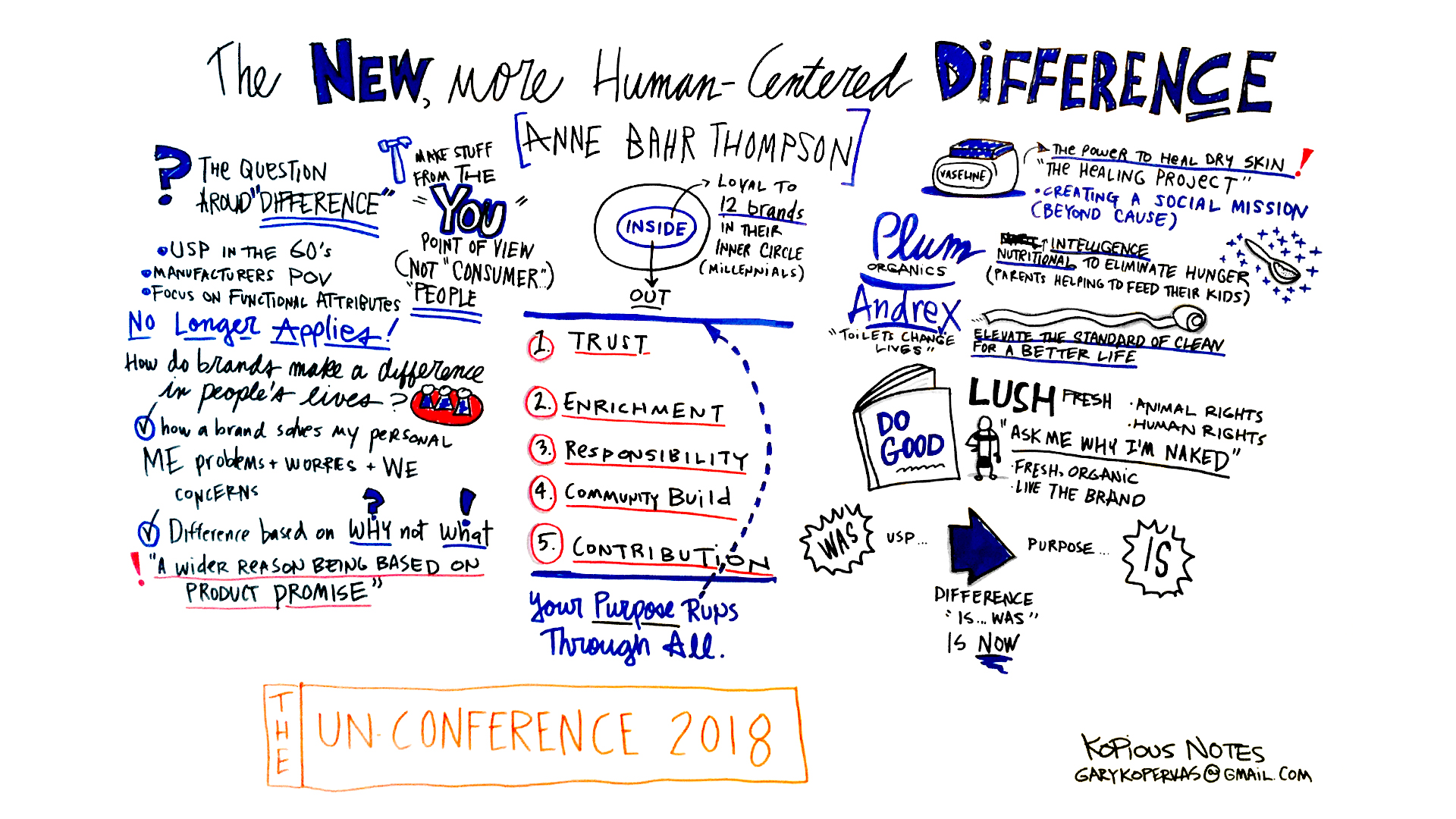
Anne devoted her discussion to defining what “difference” means today and how brands would be wise to follow her model of Trust, Enrichment, Responsibility, Community-Building, and Contribution. Anne went on to say that a brand’s sense of purpose should run through everything they do, emphasizing that a truly human-centered brand remains focused on the “why” — not the “what.”
Norty Cohen + Jillian Flores: Join the Brand
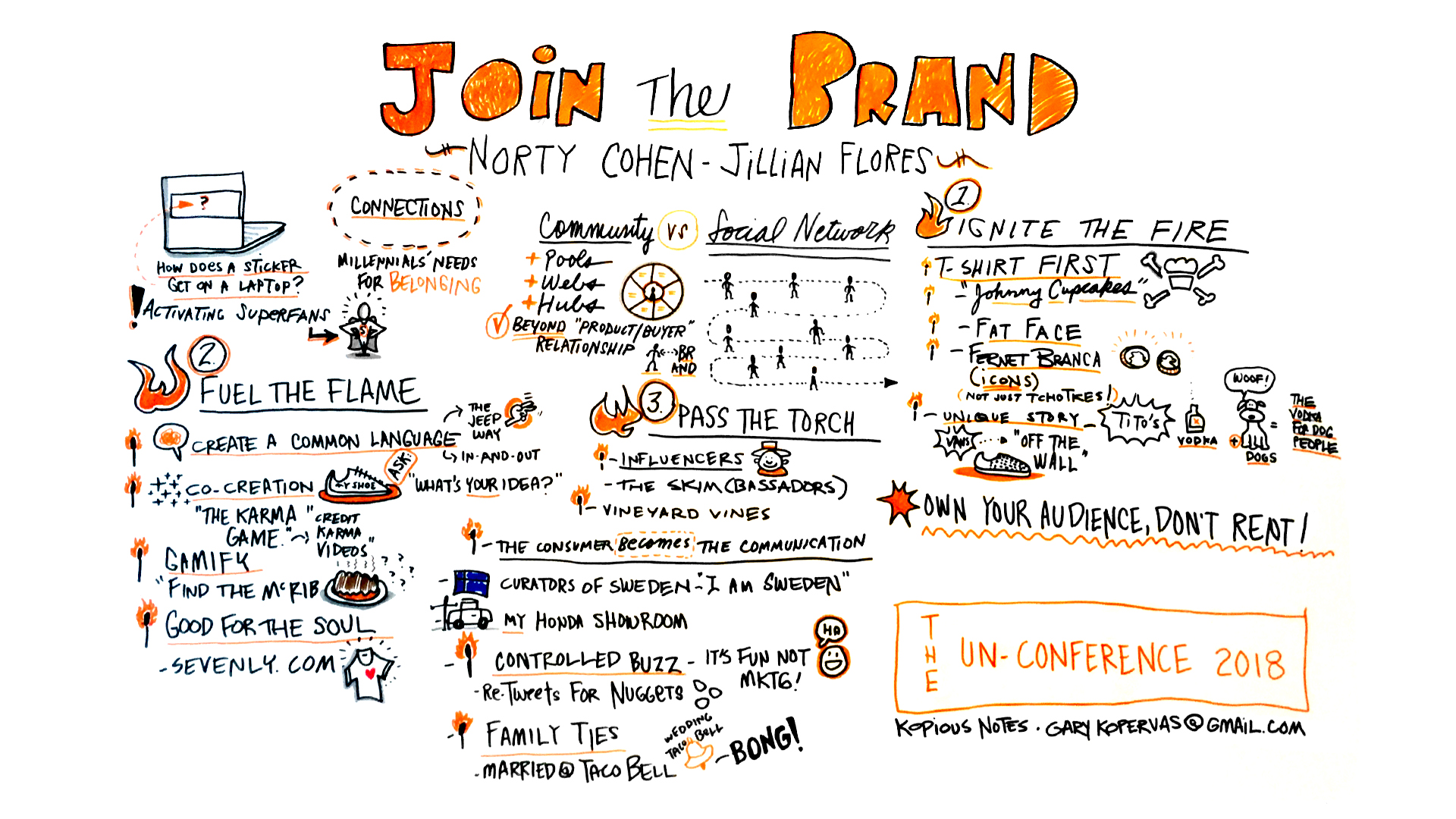
As you might expect, Join the Brand is all about participation. The key question these speakers asked was, “How well does your brand invite participation?” To help brands devise an answer, they spoke about the need for brands to Ignite a Fire, Fuel the Flame, and Pass the Torch — a really cool construct to help brands build participation.
Steve Wunker: Building in Customer-Centricity by Using Jobs to Be Done
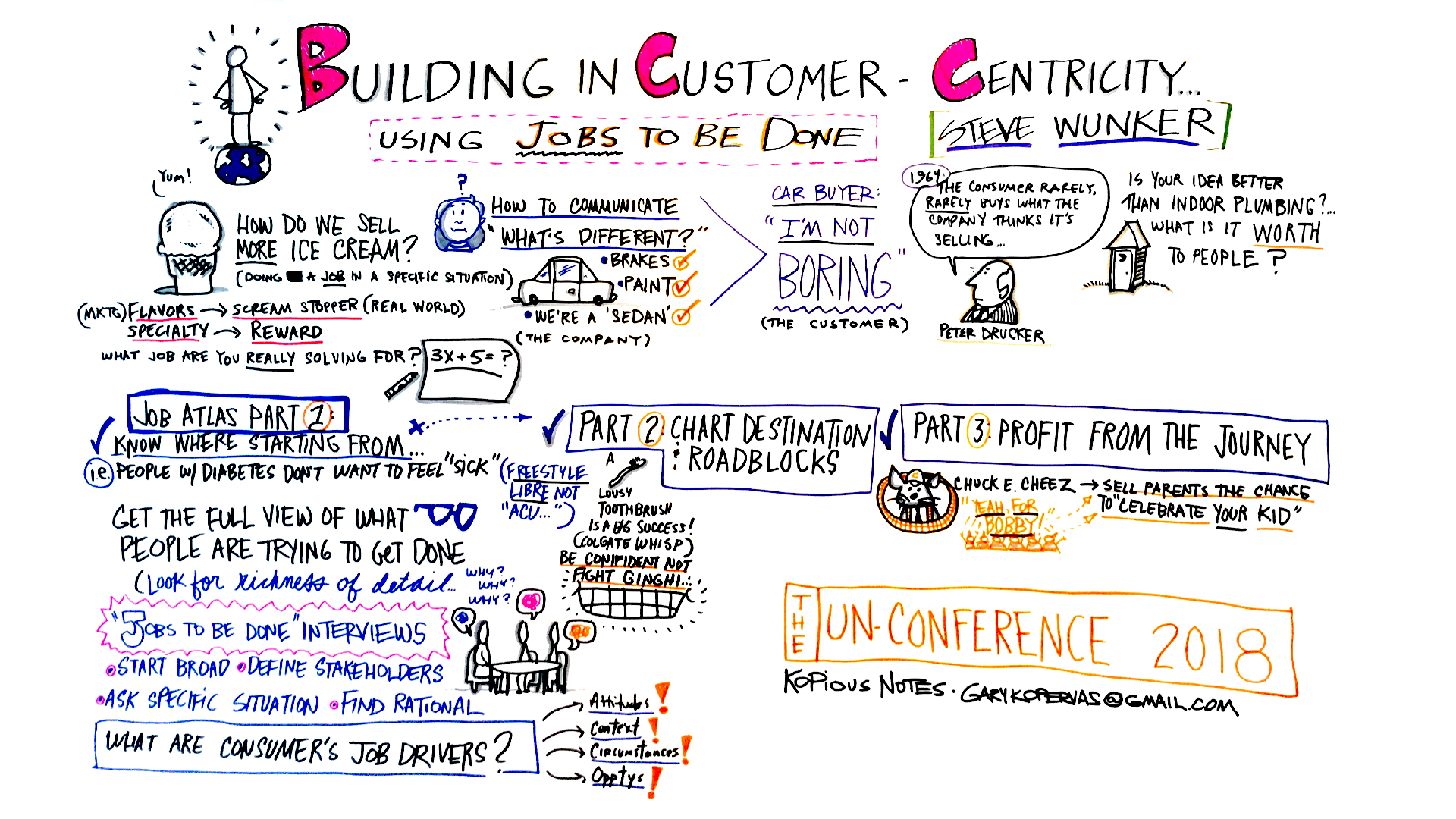
Steve stressed the importance of brands looking at the “jobs to be done” in the minds and lives of consumers. He presented the questions we could ask our consumers and ourselves about the jobs that need to done in their lives and how brands could uniquely solve for those needs. He posed an interesting question: When someone buys an ice cream cone on a hot summer day, what job are they really getting done?
To get a closer look at the presentations, check out the live sketch notes captured in San Diego. If you’d like to get the whole set of sketches, write me at gary@20nine.com and I’d be glad to send them to you.
I had some time on my flight home to ask myself about the common themes that emerged from my week in San Diego. Here are a few that I believe lived in each of the presentations in some form or another:
- Orientation—It’s the brands that start with the consumer and really dig to find the human element in the brand work they’re doing that significantly increase their chances of success. Focus on the human as your point of origin.
- Emotion—You can build emotional connections with consumers by appealing to human nature. As Carmen Simon puts it, humans drive demand, not robots. What emotional hot buttons are you focusing on in your marketing?
- Storytelling—No matter how important data becomes, it’s up to marketers to find the human element in any product story, or they risk failure — big time. We need to construct a story strategy and trajectory in order to engage with consumers in ways they can embrace and make their own.
- Participation—Even the best stories will miss if we don’t build participation into the proposition. How do you plan to invite participation in ways that will make your audience want to seek you out and become part of your community? It’s the difference between “owning” your audience and “renting” it.
The Purpose First Virtual Workshop helps you and your company’s leadership team align your brand’s core purpose, vision, mission and values with the needs of your core customers to help your brand lean into uncertainty with greater confidence, and advance the business forward even in these unprecedented times.
Learn more